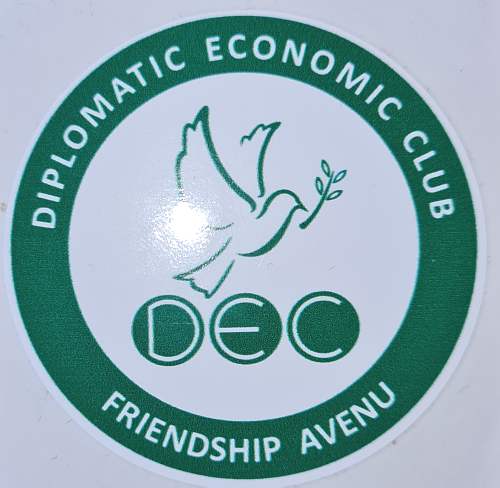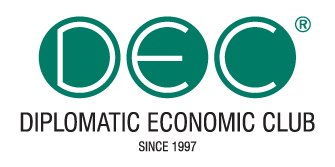Regions as a source of progress in the European Union
Regional development in the EU has acquired a particular attention in the Union policies after the Maastricht Treaty in 1992. Since then, major attention in the Union’s support for social and economic development in European regions has transformed both the Union’s budget and the policy coordination. A new publication provides a fresh insight into the „regions’ opportunities“ for theory and practice of European integration.
The purpose of the Union’s regional policy is to strengthen economic, social and territorial cohesion by reducing disparities between the levels of development among the member states. In this way the policy intends to contribute positively to the overall economic performance of the EU.
It has been decided in the EU that reducing disparities requires a cohesion policy promoting constant improvements in competitiveness and employment. By co-financing infrastructure projects, developing the information society, accelerating the transfer of know-how, supporting investments in people and stimulating cross-border cooperation, the Union helps regions that are less prosperous or are suffering from structural problems to improve competitiveness and to achieve a faster rate of economic development in a sustainable way. The whole spectrum of regional ideas was included into the recently developed EU-2020 Strategy with smart, sustainable and inclusive growth. See: https://ec.europa.eu/dgs/regional_policy/index_en.htm
No doubt, regional problems have become an important issue in modern debates among academics and politicians on effective implementation of the EU-2020 strategy. Therefore a new publication on the role of regions in Europe would definitely become both a reference for further studies and a popular reading.*) The book is really international: it is written by 17 authors from numerous European states and a couple of scientists from the University of Southern California (in the US). The scale and coverage is quire representative: Norway and Poland, Denmark and Sweden, the UK, Germany and Hungary; the editors have been chosen from Sweden and the UK. *) The Role of Regions? Networks, scale, territory. Eds. Herrschel T. & Tallberg P. –Kristianstads Boktryckeri, Sweden, 2011. — 303 pp. Definitions: the scope and scale It is a difficult task to define regions in Europe: both administrative and territorial dimensions have to be taken into account, as well as population and the level of GDP per capita. The editors decided to take as a starting point the definition used by the Assembly of European Regions (AER) elaborated as far away as in 1996. Without a critical acclaim to the consistency of AER’s definition, which the editors themselves acknowledged (p.22), it is well worth mentioning that the European Union for the purpose of its regional policy has elaborated a different approach to regions. The latter is more apt to the needs of European integration and numerous funds’ network, as well as the aims of the EU regional policy. Regional policy in the EU has certain specifics: although this policy is not directly mentioned in the Treaties, there is a commissioner responsible for development in this policy (presently, Johannes Hahn and the DG InfoRegio’s Director-General, D. Ahner). Important, that several social and economic spheres are involved in this policy guideline, e.g. cohesion, convergence, competitiveness, etc. which can clearly show that „regional aspects“ are closely connected with several important EU and member states’ policies. On the other hand, about 270 „recognized regions“ in the EU are striving for help and assistance which are divided into 3 main objectives: convergence, regional competitiveness and territorial cooperation. Short history Regional policy is one of the fundamental integration issues in the Communities and the Union. Thus, already in 1957 the Treaty of Rome included in the preamble the need for the member states „to strengthen the unity of their economies and to ensure their harmonious development by reducing the differences existing among the various regions and the backwardness of the less-favoured regions“. Then, in 1958 the European Social Fund (ESF) was set up; in 1962 the European Agricultural Guidance and Guarantee Fund (EAGGF) was created and in 1975 the European Regional Development Fund (ERDF); the latter with the aim of contributing to the less-favoured regions’ development. The TEU (Treaty of the European Union, 1992) designated cohesion as one of the main objectives of the Union and established the Cohesion Fund (to support projects in the field of environment and transport in the least prosperous Member States). And in 1994 the Committee of the Regions, CoR was established for the EU-12; in the EU-27 there are about 350 CoR members. The member states’ representation in CoR is different: from the highest 24-21 number of delegates for big countries to 3-5 members for smaller ones.See: the web site of the Committee of the Regions: https://www.cor.europa.eu/en/index.htm. The European Council in 2005 reached a compromise on the EU 2007-2013 Budget and for the Cohesion Policy implementation was allocated about ? 347 bln. The New Reform Treaty (Lisbon Treaty) installed a new heading of the Treaty’s title „Economic, Social and Territorial Cohesion“ – art.174-178, TFEU (amendment to art.158 in the TEC – „Economic and Social Cohesion“).The mission’s possible: cohesion policyThe mission in the DG for Regional Policy is to strengthen economic, social and territorial cohesion by reducing disparities in the level of development among regions and Member States. This means: investing in regions’ indigenous potential to promote the competitiveness of regional economies and the permanent catch-up of those lagging behind the more prosperous areas. The emphasis is to ensure that the Union’s contribution to regional development adds maximum value. We can conclude that the EU regional policy is therefore an expression of the member states’ solidarity and of the drive for increased competitiveness throughout the Union. The division by objectives in the Cohesion Fund is the following: in the period 2007-13 the EU Cohesion policy will get 35,7% of the total EU budget. This amount is supposed to be divided into three main assistance categories: Convergence (Cohesion Fund and Convergence allocations) — 81,5% Regional Competitiveness & Employment — 16% European Territorial Cooperation (ETC) — 2,5% See: https://ec.europa.eu/regional_policy/funds/pdf/annexe-recto.pdf Among recipient EU member states most of the amounts in Cohesion funds during 2007-13 (in euros) will go to: Poland -67,3 bln, Italy-28,8, Germany and Czech Republic -correspondingly, 26,3 and 26,7 bln; Hungary -25,3 bln, Portugal -21,5 and Rumania -19,6 and France 14,3 bln. Some countries seemed almost negligent on these levels, e.g. Denmark, with 613 mln for 7 years (ten times less than Poland). See: https://ec.europa.eu/regional_policy/funds/pdf/annexe-verso.pdf Important to underline, that there are three main objectives, to which the EU structural funds and financial instruments complement the regional development objectives’ implementation: 1. Convergence (assisted by European Regional Development Fund (ERDF), European Social Fund (ESF) and Cohesion Fund). The rationale of the Convergence objective is to promote growth-enhancing conditions and factors leading to real convergence for the least-developed member states and regions. In EU-27, this objective applies to 17 member states with 84 regions and total population of 154 million, and per capita GDP of about 75 % of the Community average (on some Eurostat accounts, there are 99 regions with 170 mln). On a „phasing-out“ basis there are another 16 regions with a total of 16,4 million inhabitants and a GDP only slightly above the threshold. The assistance’s amount available under the Convergence objective is ? 282,8 billion, representing 81.5 % of the total regional development fund. It is split as follows: ? 199,3 billion for the Convergence regions, while ? 14 billion are reserved for the „phasing-out“ regions, and ? 69,5 billion for the Cohesion Fund, the latter is applied only to 15 member states. Some countries, without any division into regions, are subject to convergence: Bulgaria, Estonia, Latvia, Lithuania, Poland, Malta, Romania and Slovenia. See: https://ec.europa.eu/regional_policy/policy/object/index_en.htm. 2. Regional competitiveness and employment (assisted by European Regional Development Fund and European Social Fund). Outside the Convergence regions, the regional competitiveness and employment objective aims at strengthening competitiveness and attractiveness, as well as employment, through a two-fold approach. First, development programs will help regions to anticipate and promote economic change through innovation and the promotion of the knowledge society, entrepreneurship, the protection of the environment, and the improvement of their accessibility. Second, more and better jobs will be supported by adapting the workforce and by investing in human resources. In EU-27, a total of 168 regions are eligible (on some accounts-271 regions), representing 314 million inhabitants. Within these, 13 regions which are home to a total of 19 million inhabitants represent so-called „phasing-in“ areas and are subject to special financial allocations due to their former status as „Objective 1“ regions. The amount of ? 55 billion – of which ? 11,4 billion is for the „phasing-in“ regions – represents just below 16% of the total allocation. Regions in 19 member states are concerned with this objective. The former programs Urban II and Equal are integrated into the Convergence and Regional Competitiveness and Employment objectives. 3. European territorial cooperation (assisted by ERDF). The territorial cooperation objective is to strengthen cross-border co-operation through joint local and regional initiatives. Trans-national co-operation aims at integrated territorial development, interregional co-operation and exchange of experience. The population living in the EU cross-border areas amounts to 181.7 million (37.5 % of the total EU population with 172 regions), whereas all EU regions and citizens are covered by one of the existing 13 transnational co-operation areas.About ? 8,7 billion (2.5 % of the total budget) available for this objective; money is split as follows: ? 6,4 billion- for cross-border cooperation, ? 1,9 billion for transnational and ? 445 million for inter-regional co-operation.Eugene Eteris, RSU, European Studies Faculty, Baltic-course.com

 Appeal to world leaders and humanity
Appeal to world leaders and humanity
